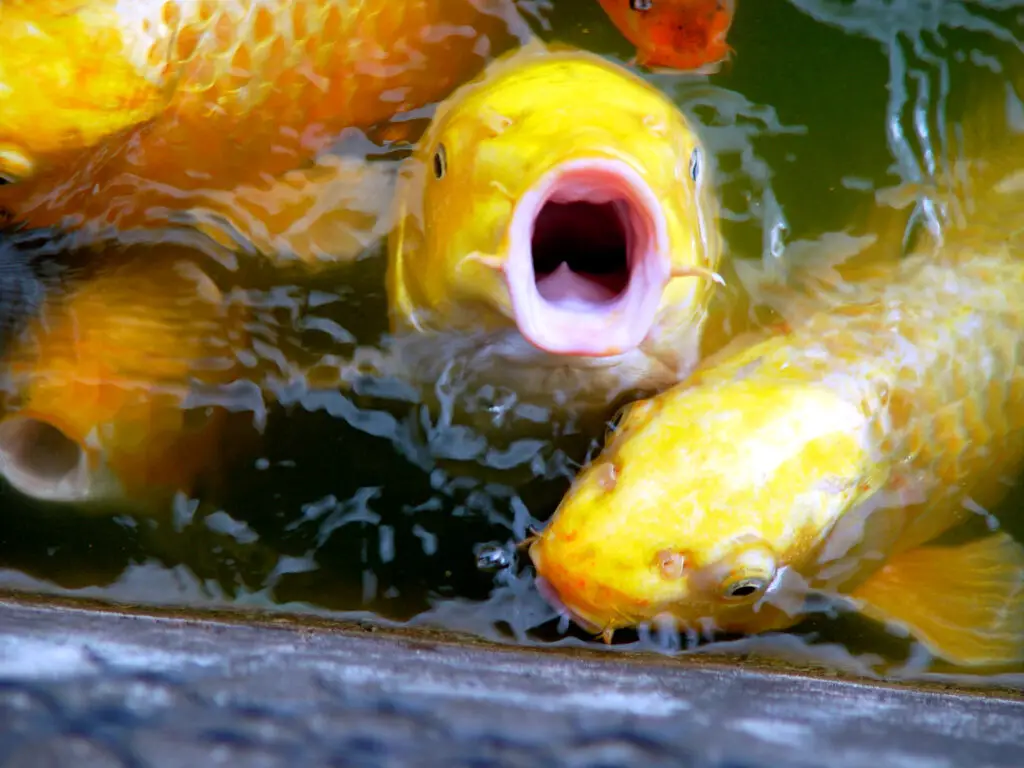
One of the joys of seeing beautiful, graceful Koi in a pond is when feeding time arrives. They flock around the feeder and take food from the person’s hand, indicating a special relationship between the fish and humans. But do they have teeth, and if so, do they bite? And of most concern, could the bites hurt?
Koi fish do have teeth, but Koi don’t bite humans. Their teeth are situated far back in their throats. When one feeds Koi, one is unlikely to put one’s hand so deeply into the fish’s throat that one would contact the teeth. However, one may feel a pull or suction on one’s fingers as Koi have muscular mouths.
Fortunately, we can draw on decades of scientific research into fish and numerous experts in the field to provide a wealth of information about Koi and their teeth. Understanding the type of teeth the Koi have, their mouths, and their feeding habits can help us care for them more effectively. Let’s explore these closely.
Pro Tip: If you’re tired of wasting money and making costly mistakes on the koi-keeping hobby or are thinking about buying koi fish but don’t know where to start, I strongly suggest you check out this ebook. I recently read this ebook, and it contains SO much useful information, such as:
- 3 proven steps to identify koi fish diseases
- WARNING: 3 things you should NEVER do when it comes to caring for koi
- When to seek professional help when it comes to looking after your koi
Do Koi Fish Bites Hurt?
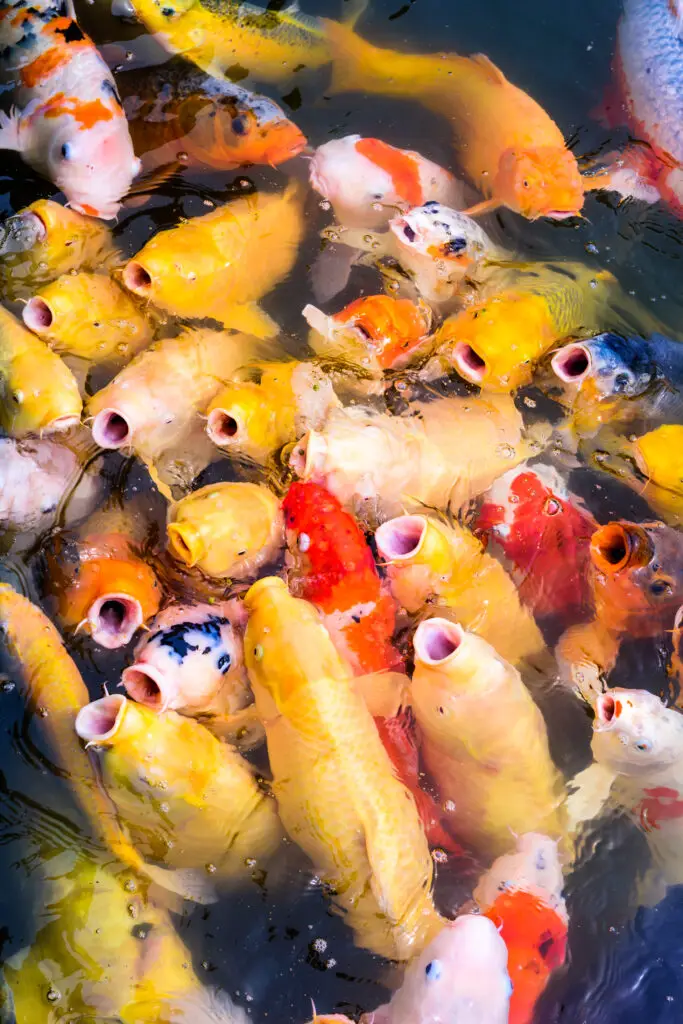
Don’t worry – Koi, don’t bite the hands that feed them! Their bites may hurt some of the little creatures they feed on, and some aggressive Koi may bite other fish that swim into their space but rest assured, human hands are safe.
Koi taste things in their mouths before moving them back to their throats to be chewed. Fortunately, human fingers are not items on Koi’s menu.
Koi recognize the persons feeding them and will gather around them when it’s time to be fed. It is safe to train them to take food from one’s hands. Researchers have found individual differences among Koi regarding how much physical contact with humans they seek and enjoy. Some will frequently engage in tactile interaction, while others will occasionally.
What Sort Of Teeth Do Koi Fish Have?
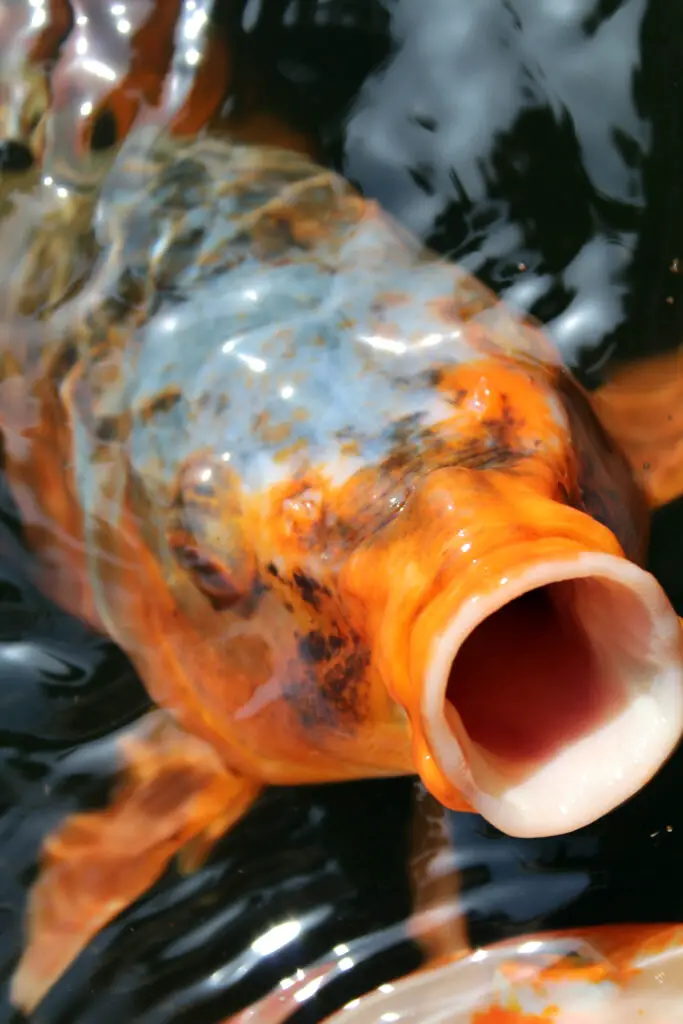
The teeth of the Koi are not located in their jaws, as human teeth are, but are situated in their throats (the pharynx). All bony fish have teeth, and pharyngeal teeth are typical of all cyprinids: the Koi are members of the Cyprinidae family of fish. These can have up to three rows of paired pharyngeal teeth.
In small Koi, you could technically reach back far enough to touch the teeth, but even then, the Koi won’t bite.
Should your Koi have flukes (a type of parasite) attached to their gills, and you’re inspecting them, you may be able to see their teeth, but even handling them this way won’t make them bite you. Any injury you receive from their teeth is more likely to result from the Koi wriggling to free itself.
Koi teeth point inward and upward and grind their food against a thick pad in the base of the skull, sometimes called the Carp stone. A muscular pad pushes their food into their throats and against their teeth. Then other strong muscles provide the power to smash shells and grind their food into tiny particles that they can easily swallow.
Koi are molariform: their teeth are flat, with broad molars. These are well-secured to manage the force of constantly crushing and grinding soft and hard foods. The hard foods include snails and mollusks, such as mussels with shells.
By contrast, the canine teeth found in predatory fish like barracuda and sharks are long, similar to the canine teeth in dogs, and are used for biting and piercing. The type of teeth the Koi has shows us what they like to eat and elements of their lifestyle.
Scientists theorize that fish teeth originally developed from scales covering their lips. In living sharks, individual placoid scales can be seen grading into teeth in their jaws. Placoid scales are tiny, bony projections.
The noise made as the Koi grind their food with those strong teeth can be heard underwater by a hydrophone which is a microphone specially designed to listen to underwater sounds. Some Koi owners report hearing the grinding sounds without a hydrophone.
Koi do not always swallow all the food they take in at once. They often store their food in their mouths and then, in a quiet spot, move the food to the Carp stone to be processed before digesting it. In this way, they can take in large amounts of food at one time.
So How Do Koi Teeth Compare To Human Teeth?
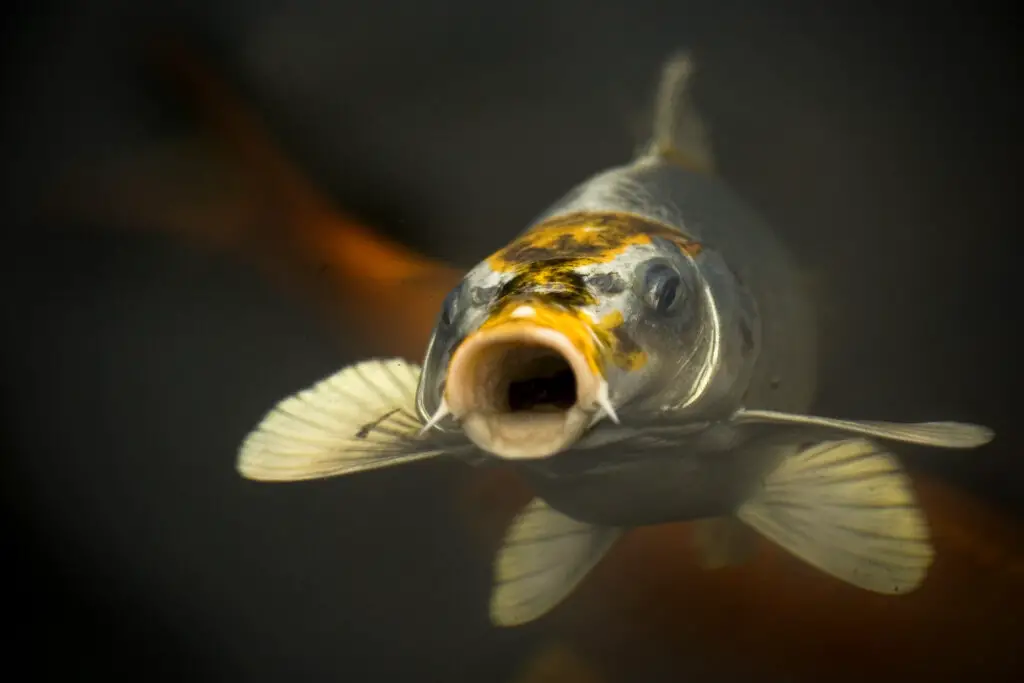
The teeth of the Koi and humans are similar in that both have an enamel covering over a pulp cavity filled with blood vessels and nerves.
However, they differ because human teeth are only found in our jaws, whereas fish can have teeth in other parts of their bodies. As we’ve seen, the Koi’s teeth are in their throats.
Another difference is that fish regularly lose teeth and replace them over their lifetimes, whereas human teeth are only replaced once. Unlike humans, the Koi’s worn-out teeth are shed and replaced as often as required. The Koi can replace teeth up to 30 times.
Some Koi owners describe finding the old teeth in their filters or when cleaning their ponds. They’re easily sucked into the mechanical filter, so you’ll likely find the teeth in the filter box. It’s recommended to clean your filtration devices regularly so that the hard teeth don’t damage your filters.
You may also notice discarded teeth inside the bottom sludge of your Koi pond when you clean it. The teeth can eventually lead to tears in the liner of a pond, so it’s recommended to keep up with the general cleaning of your Koi pond.
What do Koi fish eat?
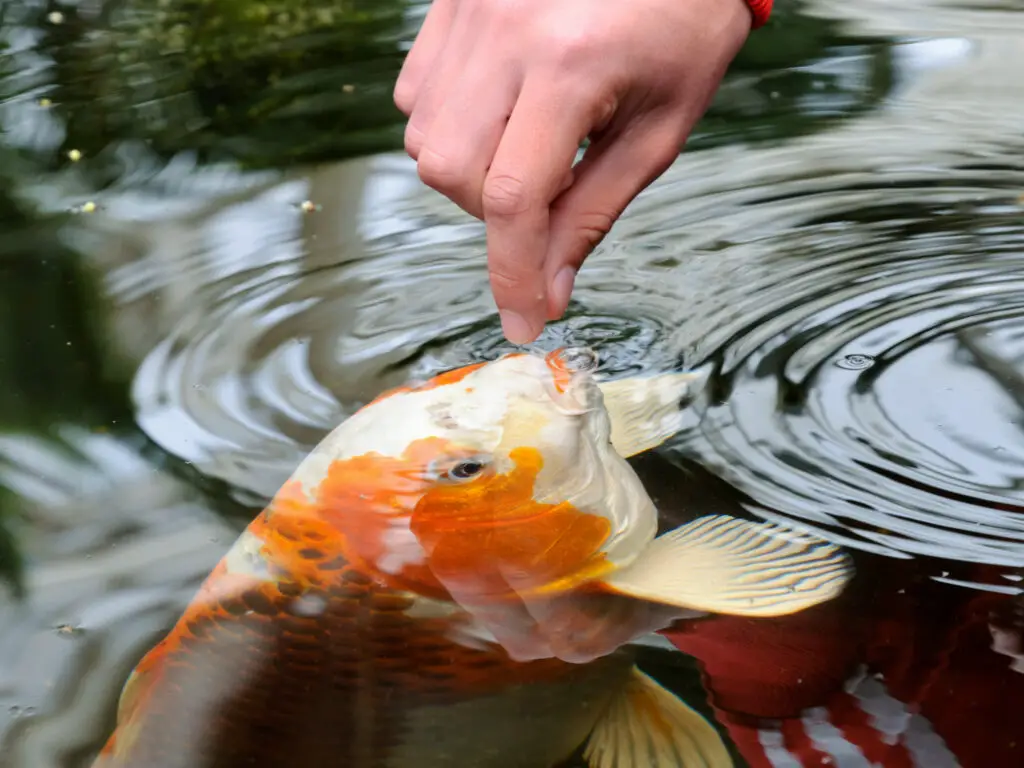
Koi fish are omnivores that can eat and survive on plant and animal matter, algae, and fungi. A balanced diet is best for them. Some owners feed their Koi nutritionally balanced fish pellets with added wheat germ or soybean meal.
Koi are naturally bottom feeders. Pellets contain a mixture of sinking and floating foods to mimic their natural feeding habits and to encourage the fish to come to the surface. While the fish are feeding at the surface, they can be regularly checked for ulcers and parasites and treated for these afflictions.
During the winter or when the water temperature reaches below ten °C (50° F), the Koi’s digestive system slows down, and they eat very little, often only nibbling on algae at the bottom of the pond. They will resume their normal eating patterns once the water temperature warms up in the spring.
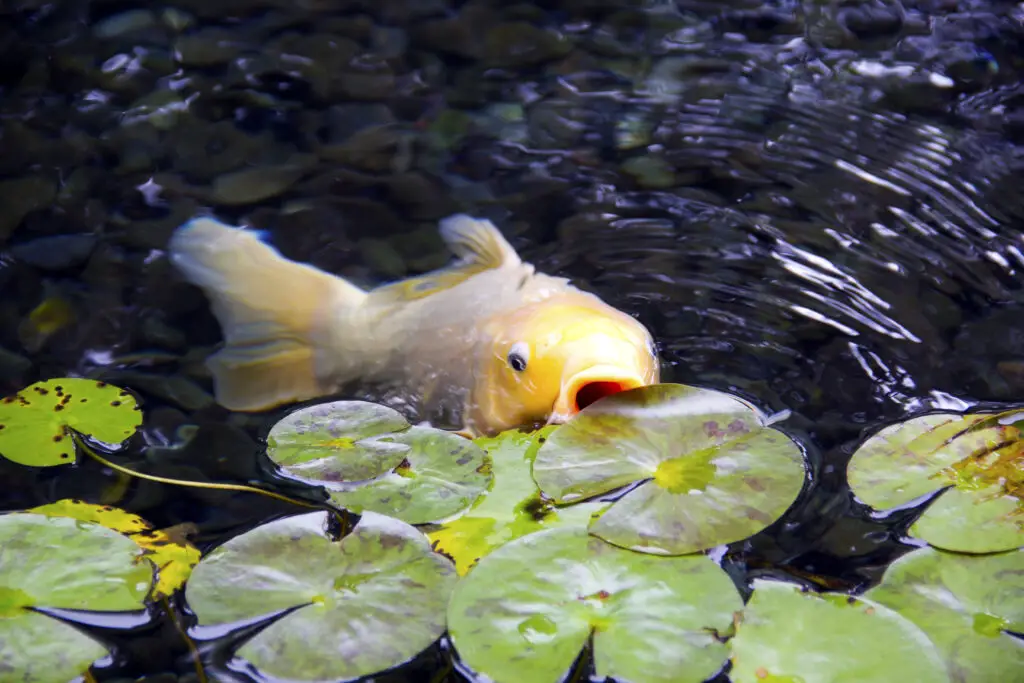
What Functions Does The Koi’s Mouth Perform?
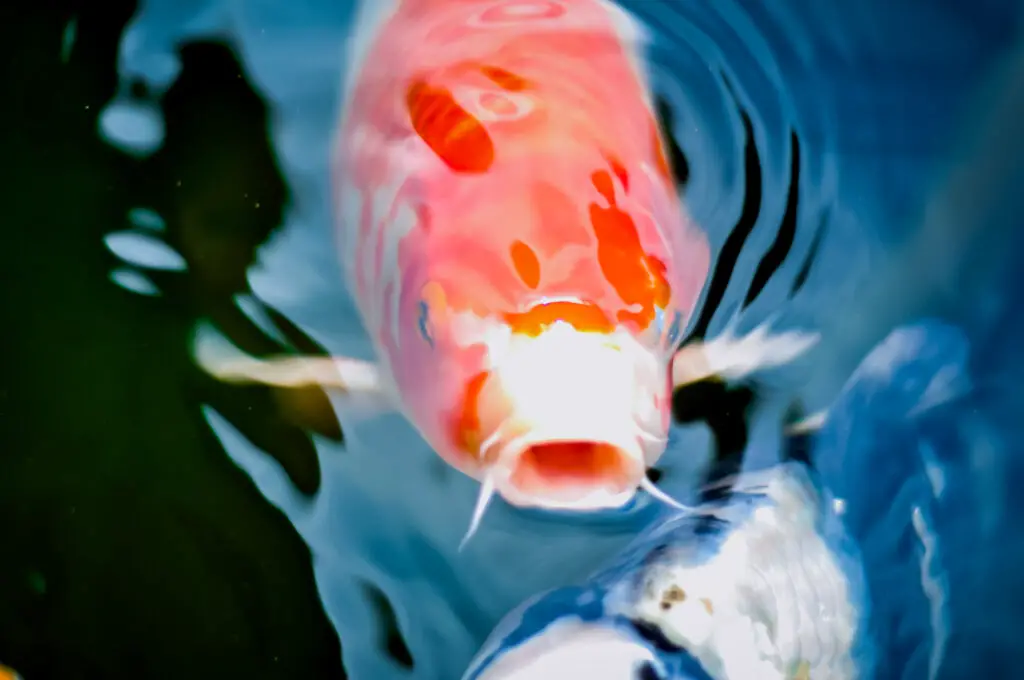
The position of Koi’s mouth reveals much about how it feeds and the type of behavior it displays.
Throughout evolution, fish have developed different mouths depending on what they eat and how they feed. The different types of mouth are all designed to help fish catch their next meal most efficiently.
“Inferior” mouths like those of the Koi are used to feed on the bottom of ponds, lakes, and seas. A Koi’s mouth opens downwards, enabling it to be a “bottom feeder,” scavenging or grazing on crustaceans or shellfish.
Their lower jaws are shorter than the upper ones.
By contrast, some fish have “superior” mouths where the upper jaw is shorter than the lower jaw. Fish with superior mouths usually feed at the surface or on food above them. They lie in wait for tasty morsels to appear above them and strike suddenly from below, predators ambushing their prey. Their lower jaw acts as a scoop to catch their prey.
The most common fish mouth type is “terminal”: the mouth is located in the middle of the head and points forward. Fish with terminal mouths will typically feed as they swim and could either chase their prey or grab pieces of food they pass.
Koi don’t only use their mouths for feeding. They perform various tasks with their mouths, whereas we humans use several senses to carry out those functions. We also have hands that allow us to hold and evaluate objects.
Two of the functions performed within Koi’s mouth are touching and tasting. The Koi has special sensory cells inside its mouth to feel and taste the objects it picks up. Everything they pick up is tested on their lips and then passed into their mouths for a full inspection. Whatever is inedible is quickly discarded in a rapid process.
And typical of Carp, Koi continuously hunt for their food, except when pellets are delivered to them.
So they are constantly sucking up and expelling material from the bottom of the pond. These actions stir the lower layer and can increase the turbidity or cloudiness of the pond water, making it muddy and unattractive. This can also inhibit the growth of aquatic plants under the water.
Fortunately, there are effective methods for cleaning Koi ponds that will clear the water and maintain the attractiveness of the Koi environment.
Problems That Can Arise While Feeding
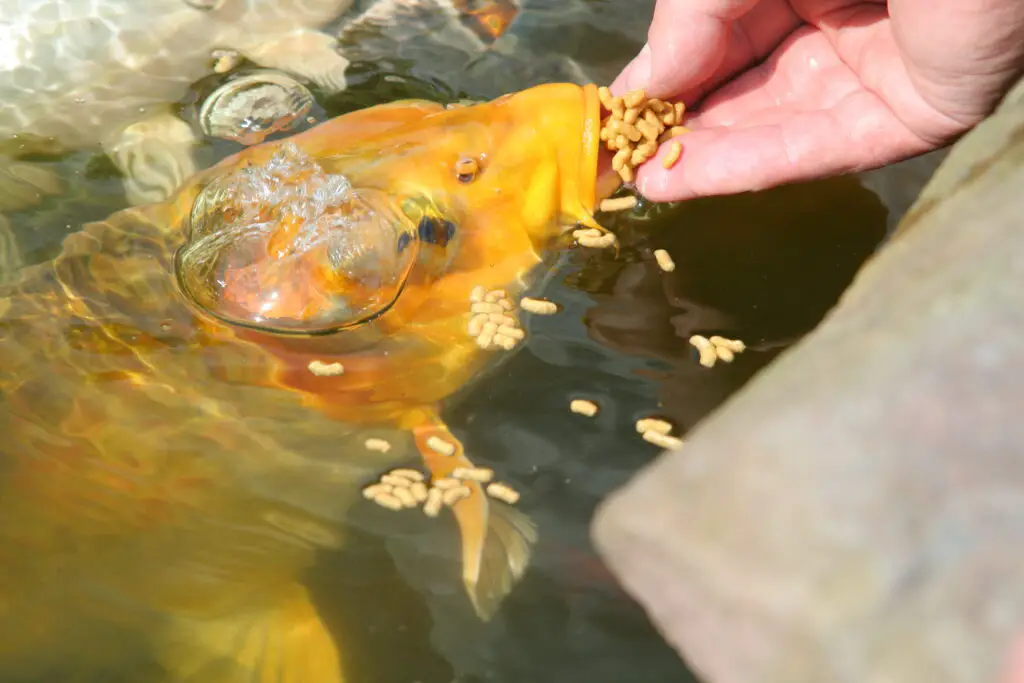
As mentioned previously, Koi don’t immediately chew everything they take into their mouths. Aquatic Pathol-biologist Dr. Paula Reynolds describes how Koi sometimes open their mouths extremely wide.
The wide mouth extension is so that they can take in several pellets at once or engulf insects, legs, wings, and all! Often the Koi will open their mouths wider than they should and then open and close their mouths a few times to restore them to their usual size.
But there are occasions when the Koi doesn’t manage to close its mouth properly. In this case, the fish owner must intervene and reposition the jaw to its natural state. The fish might have to be sedated so the jaw can be manipulated back to its correct position.
Dr. Reynolds also notes that one should look out for infections from wounds around the Koi’s mouth and lips. If the bacterial infection is only in the mouth, it can be cleared by applying an antiseptic product to the area. The lower jaw of the Koi is not always visible, and if the infection is not cleared soon enough, it can spread internally, and then a course of antibiotics is needed.
If the damage or mouth distortion is so severe that the fish cannot eat, one should seek professional help. Fortunately, aquatic veterinary medicine is fast-growing, with the AquaVetMed.info website listing more than 700 veterinarians who practice aquatic veterinary medicine.
Do Koi Eat Other Fish?
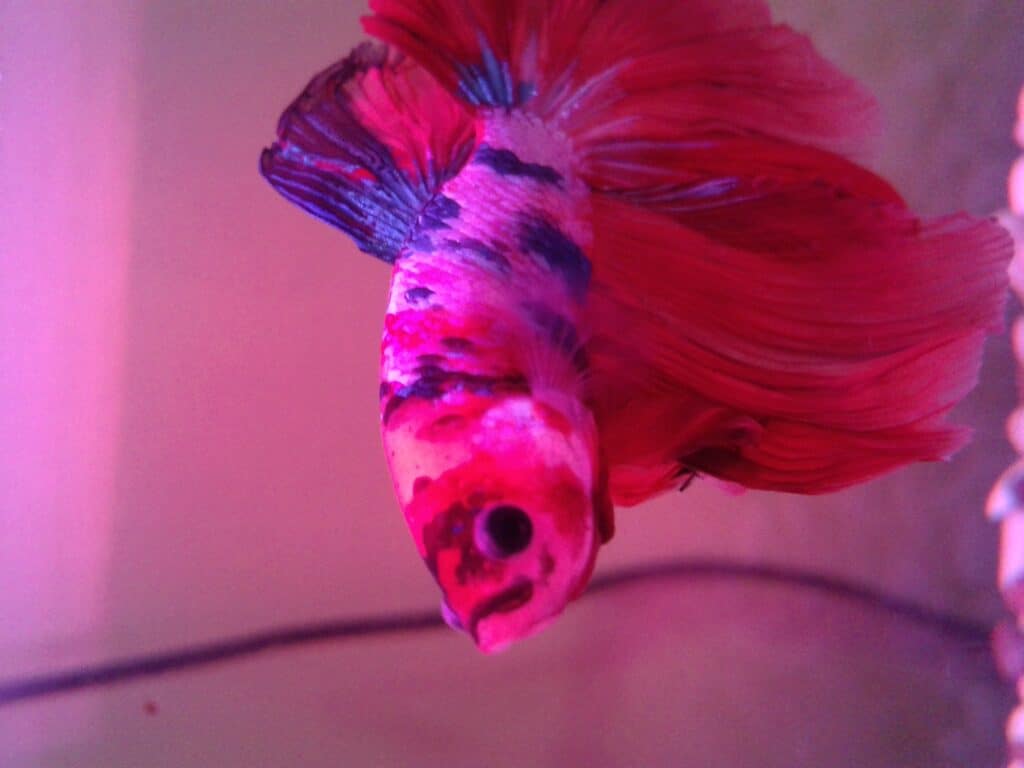
Being omnivores, Koi feed on both plant and animal matter. Koi are also opportunistic feeders: they’ll forage and adapt their feeding to whatever is available.
While they won’t actively hunt other fish, if they can suck small fish into their mouths, they’ll chew and swallow them. They will, for example, eat their fry (their offspring, which are tiny, recently hatched fish), as well as tadpoles and insects.
Researchers have also observed that some Koi can be fairly aggressive when kept in a single area with goldfish. When they were observed in a pond they shared with goldfish, they revealed a tendency to bite the goldfish, tearing them in places, which resulted in the goldfish being more susceptible to diseases.
When both types of fish were placed in one tank, the Koi seemed to set up a specific section as their territory. When goldfish swam into that area, the Koi would act aggressively toward them. However, when Koi were kept in a tank without any other type of fish, they clustered together with no specific area defined as their own territory.
It’s recommended that owners refrain from “polyculture” (keeping Koi and goldfish in a single area) despite the similarities in their diets.
Conclusion
Koi are beautiful, popular fish. Owners develop unique relationships with them, visible during feeding when the fish emerge to be hand-fed. Any concerns you may have that your Koi may bite you can be put to rest. They have teeth, but they certainly won’t bite you.
References
https://www.angelkoi.com/koi-mouths
http://animalbehavior2011.blogspot.com/2011/04/aggression-of-koi-experiment.html
https://en.wikipedia.org/wiki/Fish_anatomy
https://en.wikipedia.org/wiki/Fish_jaw
https://www.sciencelearn.org.nz/resources/1299-an-introduced-species-koi-carp
https://www.sciencedirect.com/topics/agricultural-and-biological-sciences/pharyngeal-teeth
https://afspubs.onlinelibrary.wiley.com/doi/full/10.1002/nafm.10685
https://www.aquariumnexus.com/koi-carp-have-teeth/
https://farmingaquaponics.com/do-koi-fish-bite/
https://pondinformer.com/do-koi-have-teeth-bite/
https://www.koi-fish.com/ten-things-you-didnt-know-about-koi-fish

